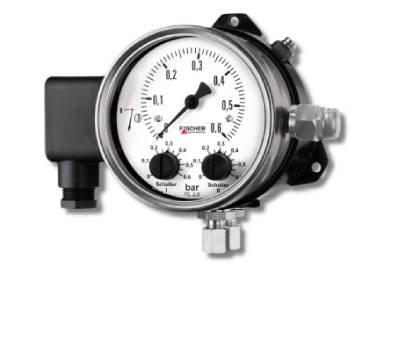Differential pressure switches are critical devices used in various industries to monitor and control pressure differences between two points. They play a significant role in ensuring safe and efficient operations in processes involving gases and liquids. In this article, we will explore the fundamentals of differential pressure switch, their applications, benefits, and how to choose the right one for your needs.
What is a Differential Pressure Switch?
A differential pressure switch is a device that detects the difference in pressure between two points in a system. When this difference exceeds a predetermined threshold, the switch activates, either opening or closing a circuit to signal a control system or alarm. This capability makes differential pressure switches crucial for maintaining optimal conditions in processes ranging from HVAC systems to chemical manufacturing.
How Differential Pressure Switches Work
Differential pressure switches operate using a sensing element that responds to changes in pressure. Here’s a basic breakdown of how they work:
- Sensing Element: The switch typically contains a diaphragm or piston that moves in response to pressure differences. When the pressure difference reaches the setpoint, the movement triggers an internal mechanism.
- Contact Closure/Opening: This mechanical action opens or closes an electrical contact, sending a signal to control systems, alarms, or indicators.
- Adjustment Mechanism: Many differential pressure switches feature an adjustable setpoint, allowing users to customize the activation pressure difference based on specific operational needs.
Types of Differential Pressure Switches
Differential pressure switches come in various types, each designed for specific applications:
- Mechanical Switches: Utilize a diaphragm or piston to mechanically open or close contacts. They are simple, reliable, and commonly used in various industrial applications.
- Electronic Switches: These use electronic sensors and microprocessors to detect pressure differences. They often offer more features, such as digital displays and programmable setpoints.
- Smart Switches: Equipped with advanced communication protocols (like Modbus or HART), these switches can integrate with digital control systems for enhanced monitoring and control capabilities.
Key Applications
Differential pressure switches find applications across multiple industries, including:
- HVAC Systems: Monitoring air pressure in ducts and filters to ensure efficient airflow and prevent system damage.
- Industrial Processes: Managing pressure differentials in chemical reactors, distillation columns, and filtration systems to optimize performance.
- Water Treatment: Detecting pressure differences in filtration and reverse osmosis systems to maintain proper function and prevent clogging.
- Oil and Gas: Monitoring pressure differences in pipelines and tanks to ensure safety and efficiency in operations.
Benefits of Differential Pressure Switches
- Enhanced Safety: By monitoring pressure differentials, these switches help prevent equipment failure and potential hazards, ensuring safe operations.
- Operational Efficiency: Maintaining optimal pressure conditions leads to improved process efficiency, reducing energy costs and downtime.
- Versatility: Available in various designs and specifications, differential pressure switches can be tailored to suit diverse applications and environments.
- Real-time Monitoring: Many modern switches provide immediate feedback, allowing for quick adjustments and timely responses to changes in system conditions.
- Ease of Installation and Maintenance: Differential pressure switches are generally easy to install and maintain, reducing operational interruptions and costs.
How to Choose the Right Differential Pressure Switch
Selecting the appropriate differential pressure switch involves several considerations:
- Pressure Range: Ensure the switch can handle the expected pressure differentials in your application.
- Setpoint Adjustment: Look for models that allow for easy setpoint adjustments to suit your operational requirements.
- Electrical Rating: Check the electrical ratings to ensure compatibility with your control systems.
- Environmental Conditions: Consider factors such as temperature, humidity, and exposure to corrosive substances when selecting a switch.
- Mounting Options: Evaluate the available mounting options to ensure the switch can be easily integrated into your existing systems.
Conclusion
Differential pressure switches are vital components in various industrial applications, providing essential monitoring and control of pressure differentials. Their ability to enhance safety, improve efficiency, and provide real-time feedback makes them indispensable in today’s fast-paced industrial environments. By understanding the different types, applications, and benefits of differential pressure switches, you can make informed decisions that enhance your operational capabilities. Whether in HVAC systems, water treatment facilities, or chemical processing plants, investing in quality differential pressure switches can lead to significant improvements in process control and safety.
